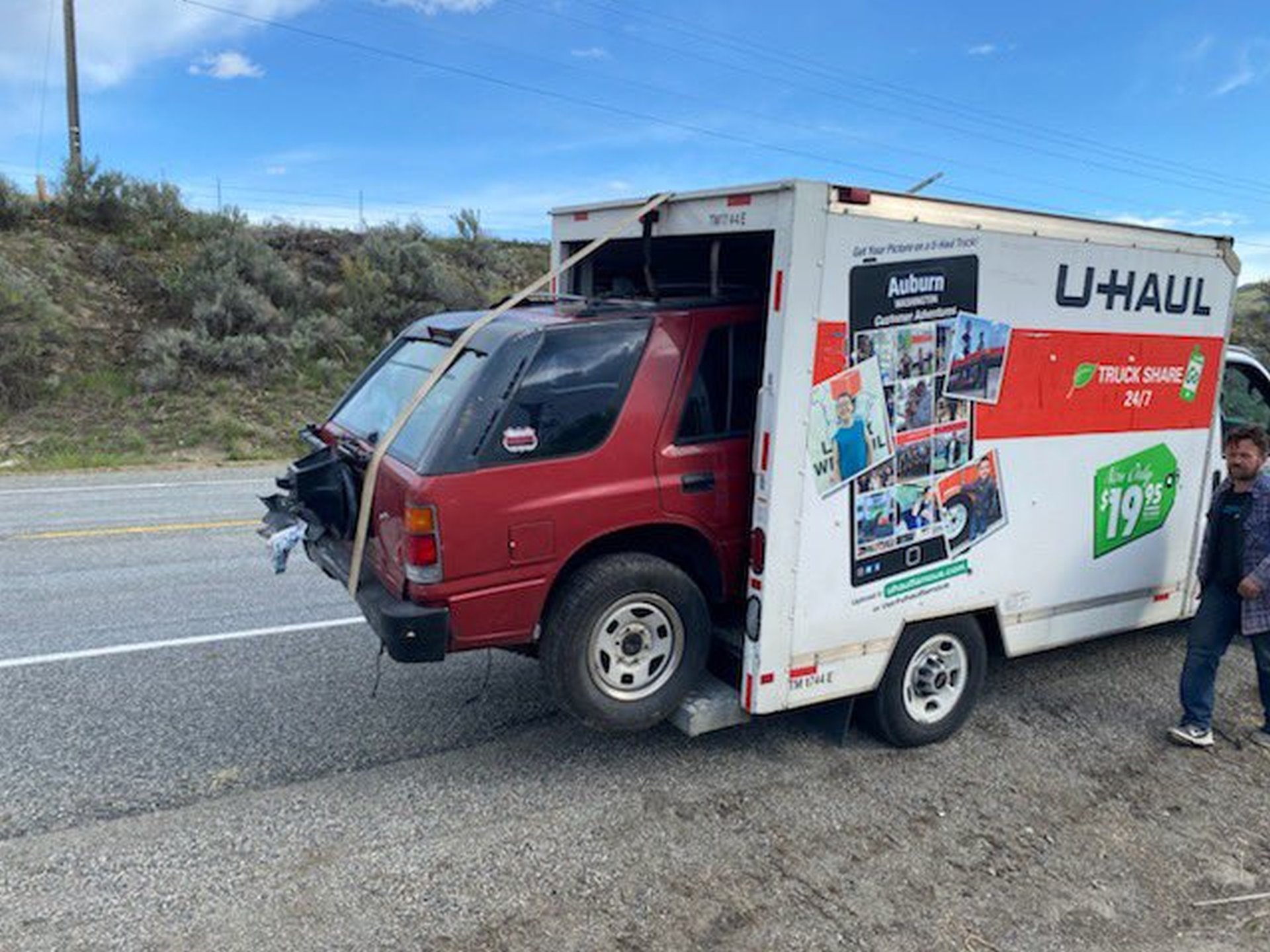Haul Truck Wheel Chocks: The Unsung Heroes of Heavy Equipment Safety cars.truckstrend.com
In the colossal world of mining, construction, and large-scale industrial operations, haul trucks stand as titans, capable of moving hundreds of tons of material with ease. These magnificent machines, however, pose significant safety challenges when stationary. A runaway haul truck, even on a slight incline or with a seemingly engaged parking brake, can be an unimaginable force of destruction, leading to catastrophic accidents, severe injuries, and even fatalities. This is where the humble, yet critically important, haul truck wheel chock enters the scene.
A haul truck wheel chock is a robust, wedge-shaped device designed to be placed snugly against the tires of these massive vehicles, preventing unintended movement. More than just a simple block, it is a non-negotiable safety component, acting as a crucial barrier against the immense forces of gravity and inertia. Understanding their design, proper application, and the vital role they play is paramount for anyone involved in heavy equipment operations, transforming them from mere accessories into the unsung heroes of site safety.
Haul Truck Wheel Chocks: The Unsung Heroes of Heavy Equipment Safety
Understanding the Critical Role of Wheel Chocks
The sheer scale of haul trucks necessitates an equally robust approach to safety. A fully loaded ultra-class haul truck can weigh well over 600 tons. Even a minor malfunction in its braking system, an oversight in engaging the parking brake, or a sudden ground shift can initiate movement. Once in motion, controlling such a mass is virtually impossible, making the consequences severe. This is precisely why wheel chocks are indispensable:
- Preventing Unintended Movement: Their primary function is to physically block the wheel from rolling, whether due to gravity on an incline, a failed parking brake, or external forces like vibrations.
- Protecting Personnel: When maintenance, loading, or unloading operations are underway, personnel often work in close proximity to the truck. Chocks provide a critical safety zone, ensuring the vehicle remains stationary.
- Safeguarding Equipment and Infrastructure: A runaway truck can collide with other vehicles, structures, and critical infrastructure, leading to massive financial losses and operational downtime.
- Ensuring Regulatory Compliance: Regulatory bodies like OSHA (Occupational Safety and Health Administration) in the U.S. and MSHA (Mine Safety and Health Administration) mandate the use of wheel chocks in specific scenarios, making their application a legal requirement. Non-compliance can result in hefty fines and operational shutdowns.
- Reinforcing Safety Culture: The consistent use of chocks signifies a strong commitment to safety within an organization, fostering a proactive approach to risk management.

Without the reliable presence of wheel chocks, the inherent risks associated with operating and maintaining haul trucks escalate dramatically, turning routine tasks into potential disasters.
Types of Haul Truck Wheel Chocks
While the basic function remains the same, haul truck wheel chocks come in various types, primarily differentiated by their material and design features, each offering distinct advantages for specific applications:
- Rubber Chocks:
- Characteristics: Made from heavy-duty, often recycled, rubber. They are exceptionally durable, resistant to abrasions, oil, and harsh weather conditions. Their weight provides stability, and the material offers excellent grip on various surfaces.
- Pros: Cost-effective, very grippy, long-lasting, absorb impact well.
- Cons: Can be very heavy, making them cumbersome to handle, especially for larger sizes.

- Urethane (Polyurethane) Chocks:
- Characteristics: Engineered from high-strength, lightweight polyurethane. These chocks are often brightly colored for high visibility and are resistant to chemicals, oils, and extreme temperatures.
- Pros: Significantly lighter than rubber, making them easier to deploy and retrieve. Extremely durable, non-conductive, and offer good grip.
- Cons: Generally more expensive than rubber chocks.
- Composite/Plastic Chocks:
- Characteristics: Made from reinforced plastics or composite materials. They are lightweight and often used for lighter-duty applications, though heavy-duty versions exist.
- Pros: Very lightweight, easy to handle, resistant to many chemicals.
- Cons: May not offer the same level of grip or durability as rubber or urethane for the largest haul trucks.
- Metal Chocks (Steel/Aluminum):
- Characteristics: While less common for everyday haul truck operations due to their potential to slip on some surfaces and higher weight, metal chocks are sometimes used for very specific, extreme conditions or for railcar applications.
- Pros: Extremely strong, can withstand immense pressure.
- Cons: Heavy, can be slippery on ice or wet concrete, prone to rust (steel).

Design Features to Look For:
- Integrated Handles or Ropes: For safe and easy placement and retrieval, preventing workers from bending excessively or placing hands too close to the tire.
- Serrated/Ribbed Surfaces: Enhance grip against the tire tread and the ground.
- High Visibility Colors and Reflective Tape: Crucial for spotting chocks in low light, dusty conditions, or from a distance.
- Connecting Chains/Ropes: For chocks designed to be used in pairs, a chain prevents loss and ensures proper spacing.
- Size and Load Capacity: Must be engineered to match the tire diameter and gross vehicle weight of the specific haul truck.
Proper Placement and Usage: A Step-by-Step Guide
The effectiveness of a wheel chock is entirely dependent on its correct application. Following a strict protocol is essential:
- Assess the Environment: Before approaching the truck, evaluate the ground conditions. Is it level or sloped? Is the surface concrete, gravel, dirt, mud, or ice? These factors influence chock selection and placement.
- Select the Right Chock: Choose a chock that is appropriately sized for the truck’s tire diameter and weight. A general rule of thumb is that the chock’s height should be at least 1/4 of the tire’s diameter. Consult manufacturer guidelines and site-specific SOPs.
- Position the Vehicle: The vehicle should be parked on as level a surface as possible, with the parking brake fully engaged, and the engine shut off (or in neutral with brakes applied for specific procedures).
- Chock Placement – The Critical Step:
- On a Slope: Place chocks on the downhill side of the wheels. For maximum security, chock at least two wheels on the same axle, or opposing wheels (e.g., front right and rear left) if the truck is on a very slight incline or flat ground. For haul trucks, typically two chocks per axle are recommended, or one chock per wheel on the downhill side of the axle.
- On Level Ground: Place chocks on both the front and back of at least one wheel, or one chock on the front of a wheel and another on the back of an opposing wheel (e.g., front right and rear left) to prevent movement in either direction.
- Snug Fit: Ensure the chock is placed firmly and squarely against the tire tread, as close as possible to the contact patch with the ground. It should not be under the tire or too far away.
- Firm Surface: Always place chocks on a firm, stable surface. Avoid placing them on loose gravel, soft mud, or ice without ensuring they have sufficient purchase.
- Verify Stability: Before anyone works around or under the vehicle, visually confirm that the chocks are securely in place and the truck is stable. A gentle push against the tire can help confirm stability.
- Communication: Clearly communicate that the vehicle is chocked and safe to work around. Use signage or visual indicators if required by site policy.
- Removal: Chocks should only be removed by authorized personnel once the vehicle is ready to move, and all personnel are clear of the immediate vicinity. The driver or operator should be aware the chocks are being removed.
- Storage: After removal, chocks should be stored in a designated, easily accessible, and protected location to prevent damage and ensure they are ready for the next use.
Key Considerations for Haul Truck Wheel Chock Selection
Choosing the right wheel chock is not a one-size-fits-all decision. Several factors must be carefully considered:
- Vehicle Weight and Tire Diameter: This is paramount. The chock must be robust enough to withstand the immense weight and forces exerted by the truck. Manufacturers provide specifications for load capacity and recommended tire sizes.
- Ground Conditions: The surface where the truck will be chocked significantly impacts the material choice. Rubber excels on concrete and asphalt, while urethane might be preferred for muddy or uneven terrain due to its lighter weight and chemical resistance.
- Environmental Factors: Extreme temperatures (hot or cold), exposure to oils, greases, or corrosive chemicals, and UV radiation can degrade certain materials over time. Urethane often performs better in harsh chemical environments.
- Regulatory Compliance: Always adhere to local, national (e.g., OSHA, MSHA), and company-specific safety regulations regarding wheel chocks. These often dictate minimum dimensions, materials, and usage protocols.
- Visibility: In busy worksites, high-visibility colors (e.g., bright yellow, orange) and reflective strips are crucial, especially during night shifts or in dusty conditions, to prevent accidental damage or loss.
- Ease of Handling: While durability is key, consider the weight and presence of handles. Chocks that are too heavy or awkward can deter proper usage.
- Durability and Longevity: Investing in high-quality chocks reduces the need for frequent replacements, offering better long-term value and consistent safety performance.
Challenges and Best Practices
Despite their simplicity, challenges can arise in the effective implementation of wheel chock programs:
- Challenge: Improper Sizing or Material Selection.
- Solution: Conduct a comprehensive site assessment. Match chock specifications to specific truck models and common ground conditions. Provide clear guidelines and visual aids for proper selection.
- Challenge: Incorrect Placement or Non-Usage.
- Solution: Implement rigorous training programs for all personnel involved, emphasizing the "why" behind chock usage, not just the "how." Regular audits and supervision can reinforce compliance. Foster a strong safety culture where using chocks is a non-negotiable standard.
- Challenge: Damaged or Worn Chocks.
- Solution: Establish a regular inspection schedule for all chocks. Any chock showing signs of wear, cracks, or damage should be immediately removed from service and replaced.
- Challenge: Loss or Theft of Chocks.
- Solution: Implement a tracking system. Designate specific storage locations on or near vehicles or at work zones. Educate personnel on the value and cost of chocks.
- Challenge: Slippery Conditions (Ice, Mud).
- Solution: For extreme conditions, consider specialized chocks with aggressive treads or integrated spikes. Enhance training for these scenarios, emphasizing extra caution and alternative safety measures if chocks cannot gain sufficient grip.
Best Practices for a Robust Chock Program:
- Comprehensive Training: All personnel, from operators to maintenance crews, must be trained on the importance, selection, placement, and removal of chocks.
- Clear Standard Operating Procedures (SOPs): Documented, easy-to-understand procedures for every scenario requiring chocks.
- Regular Inspections: Daily visual checks by users, complemented by periodic formal inspections by safety personnel.
- "Chock-Before-Work" Culture: Embed the principle that no work proceeds around a stationary vehicle until it is properly chocked.
- Visibility and Accessibility: Ensure chocks are easy to see, retrieve, and are always available where needed.
Haul Truck Wheel Chocks Price Table
The cost of haul truck wheel chocks varies significantly based on material, size, load capacity, and specific features. Below is an estimated price range for single chocks, keeping in mind that many are sold in pairs or sets.
| Category (Haul Truck Size) | Material (Common) | Chock Dimensions (Approx.) H x W x L | Features | Estimated Price Range (USD per chock) | Notes |
|---|---|---|---|---|---|
| Small-Mid Haul Trucks | Rubber, Urethane | 10-14" x 10-12" x 18-24" | Molded handle, high-grip tread, weather/oil resistant, reflective tape often | $80 – $200 | Suitable for trucks up to ~60-80 tons capacity (e.g., CAT 777, Komatsu HD785). Often sold in pairs for better value. |
| Large Haul Trucks | Urethane, Heavy-Duty Rubber | 14-18" x 12-16" x 24-30" | Robust construction, integrated rope/chain holes, high visibility colors, durable | $200 – $450 | For trucks up to ~150-250 tons capacity (e.g., CAT 793, Komatsu 930E, Liebherr T 282B). Essential for most large-scale mining and heavy construction. |
| Ultra-Class Haul Trucks | Engineered Urethane | 18-24"+ x 16-20"+ x 30"+ | Extreme load capacity, reinforced design, often custom-engineered for specific models | $450 – $900+ | For trucks 300+ tons (e.g., CAT 797, Komatsu 960E, BelAZ 75710). These are specialized, high-performance chocks for the world’s largest land vehicles. |
| Accessories/Sets | N/A | N/A | Chock carriers, chains, reflective tape rolls, paired sets (price per pair) | $20 – $100 (for accessories) | Often bundled with chocks or sold separately. Purchasing a paired set is usually more cost-effective than two individual chocks. |
Note: Prices are estimates and can vary based on brand, supplier, order volume, and specific features. Always request a quote from reputable manufacturers.
Frequently Asked Questions (FAQ)
Q1: How many wheel chocks are needed for a haul truck?
A1: While minimum requirements vary by regulation and site policy, it’s generally recommended to use at least two chocks for a haul truck. These should be placed on the downhill side of the axle if on a slope, or on opposing wheels (e.g., front right and rear left) if on level ground, to prevent movement in either direction. For maximum safety, some sites require chocking multiple axles or wheels.
Q2: What material is best for haul truck wheel chocks?
A2: There’s no single "best" material; it depends on the application. Urethane chocks are often preferred for their lighter weight and chemical resistance, while heavy-duty rubber chocks offer excellent grip and durability at a lower cost. Consider the specific ground conditions, environmental factors, and handling requirements.
Q3: How do I know what size chock to use for my haul truck?
A3: The chock’s height should be at least 1/4 of the tire’s overall diameter. Always consult the chock manufacturer’s specifications for load capacity and recommended tire sizes. Your company’s safety procedures and regulatory guidelines (e.g., MSHA, OSHA) will also provide specific requirements.
Q4: Can I use a large rock or a piece of wood instead of a proper wheel chock?
A4: Absolutely NOT. Using makeshift chocks like rocks, logs, or pieces of wood is extremely dangerous, illegal in most regulated environments, and can lead to severe accidents. They lack the engineered design, grip, and durability of purpose-built wheel chocks and can splinter, crack, or slip under the immense weight of a haul truck.
Q5: How often should wheel chocks be inspected?
A5: Wheel chocks should be visually inspected before each use for any signs of damage, wear, or degradation. Additionally, regular, more thorough inspections (e.g., monthly or quarterly) should be part of a comprehensive safety program to identify issues that might compromise their integrity. Damaged chocks must be immediately removed from service.
Conclusion
Haul truck wheel chocks, though seemingly simple, are indispensable safety devices in heavy industry. Their role in preventing catastrophic accidents, protecting personnel, and safeguarding valuable assets cannot be overstated. From selecting the appropriate type and material to ensuring meticulous placement and fostering a robust safety culture, every aspect of wheel chock management is critical.
Investing in high-quality chocks, providing thorough training, and enforcing strict adherence to safety protocols are not merely regulatory burdens but fundamental pillars of operational integrity. The humble wheel chock stands as a testament to the fact that even the smallest components can have the most profound impact on safety, serving as the silent guardians against the immense power of a haul truck. In the demanding environments where these giants operate, the commitment to proper wheel chocking is, quite simply, non-negotiable.




